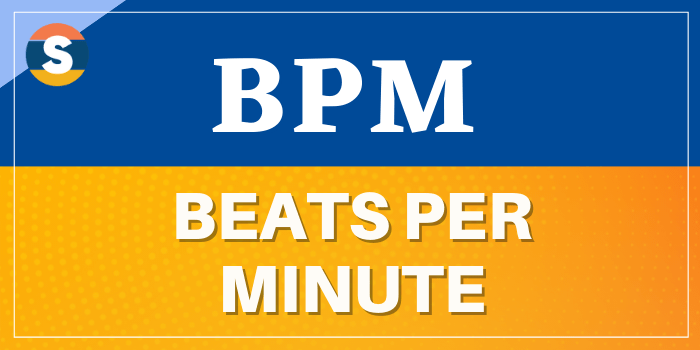BPM Full Form in Medical and Business
BPM Full Form in Medical
BPM Full Form – The Full form of BPM is Beats per Minute. Heart rate is the speed of the heartbeat measured by the number of beats (contractions) of the heart per minute (BPM). The heart rate can vary according to the body’s physical needs, including the need to absorb oxygen and excrete carbon dioxide. It is usually equal or close to the pulse measured at any peripheral point. Activities that can provoke change include sleep, anxiety, stress, physical exercise, illness, and ingestion of drugs.
For adults, a normal resting heart rate ranges from 60 to 100 beats per minute. Generally, a lower heart rate at rest implies more efficient heart function and better cardiovascular fitness. For example, a well-trained athlete might have a normal resting heart rate closer to 40 beats per minute. You can simply check your pulse to measure your heart rate.
To check your pulse at your wrist, place two fingers between the bone and the tendon over your radial artery — which is located on the thumb side of your wrist. Factors that can influence your heart rate are: age, fitness and activity levels, being a smoker, having cardiovascular disease, diabetes or high cholesterol, air temperature, body position (for example, standing up or lying down), emotions, body size or medications.
Importance of BPM (Beats Per Minute)
In the world of medicine, monitoring beats per minute (BPM) is important because it can reveal important facts about a person’s heart health. A key essential marker that can show a variety of medical issues is the heart rate, or BPM. Adults’ normal heart rates normally range from 60 to 100 BPM, though they might change depending on things including age, level of fitness, and medication use.
A very high or very low BPM can indicate heart arrhythmia, heart disease, or an overactive thyroid, among many other medical conditions. Moreover, BPM can be used to monitor the success of treatment for heart-related disorders and to spot changes in heart rate that could indicate a growing issue.
It can also be used to evaluate a person’s level of physical fitness. It can be used by athletes to track their exercise volume and spot overtraining.
In conclusion, BPM is an important vital sign that can provide important details about a person’s heart health and be used to identify, treat, and track the number of medical disorders.
BPM Full Form in Business
What is Business Process Management?
BPM Full Form – The Other Full Form of BPM is Business process management (BPM) is a scientific method for improving and optimizing a company’s business processes effectiveness, agility, and efficiency. With the goal of improving overall performance and achieving particular business objectives, it includes the design, planning, execution, monitoring, and analysis of business processes. BPM can be used for wide range of company processes, including those involved with operations, finance, human resources, and customer support. Process modeling, process simulation, process automation, and process analysis are examples of BPM tools and approaches.
Advantages of Business Process Management:
There are many advantages to using business process management (BPM) in an organization, some of which include:
- Improved efficiency and productivity: BPM helps to streamline and optimize business processes, reducing waste and increasing the speed at which tasks are completed.
- Increased agility: BPM allows organizations to quickly adapt to changing market conditions and customer needs.
- Better visibility and control: BPM provides a clear view of an organization’s processes, making it easier to identify bottlenecks and areas for improvement.
- Enhanced compliance: BPM can help organizations ensure that they are adhering to relevant regulations and industry standards.
- Improved customer service: BPM can help organizations provide faster, more accurate, and more consistent service to customers.
- Better decision-making: BPM can help organizations make more informed decisions by providing access to real-time data and metrics.
- Increased collaboration: BPM can help to break down silos and promote collaboration across departments and teams.
- Reduced costs: BPM can help organizations reduce costs by eliminating unnecessary steps and automating repetitive tasks.
Other Common Full Forms of BPM:
BPM can have several different full forms depending on the context in which it is used:
- Business Process Management: BPM is widely used in business management as a methodology for improving the efficiency and effectiveness of business processes.
- Beats per Minute: BPM is also commonly used in the medical field to refer to the number of times the heart beats in one minute.
- Business Performance Management: BPM is also used in the context of performance management, to measure and monitor the effectiveness of business operations.
- Business Process Modeling: BPM is used to model and design business processes, often using specialized software tools.
- Business Process Automation: BPM can also refer to the automation of business processes using technology to improve efficiency and reduce errors.
- Business Process Monitoring: BPM is used to observe and track the performance of business processes.
It’s important to note that the full form of BPM can vary depending on the context and the industry in which it is used. It’s always best to look at the context of the sentence or the field of study to understand the full form of BPM.
Also, see:
- MBBS Full Form, What is the Full Form of MBBS?
- MD Full Form, What is the Full form of MD?
- BMS Full Form, What is the Full Form of BMS?
- CPT Full Form, What is the Full Form of CPT?
- MS Full Form, What is the Full Form of MS?
